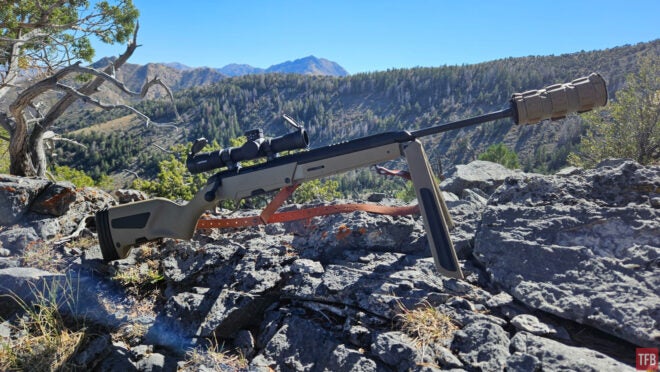Welcome back to this ongoing series on the Steyr Scout. Part 1 was an overview of the rifle and its features and performance. Part 2 examined optics options and what makes the most sense on a scout rifle. We are here today for Part 3, a look at the Steyr Scout as a hunting rifle.
Steyr @ TFB:
- What is the (Incredibly Rare) Steyr G62 Assault Rifle?
- The Steyr AUG 24″ HBAR Barrel Is Back!
- IDEX 2023: Steyr C9-A2 MF – An Often Overlooked Austrian Handgun
- Austria Begins Issuing Upgraded Steyr AUG Rifles
- [EnforceTac 2023] The New Lightweight Piston-Operated Steyr DMR
The disclosures for this article are the same as the other portions of this review. Steyr loaned me the rifle. I paid for the ammo.
Ammunition Selection
I was not happy with the bulk plinking ammo that I loaded up for Part 2. It would probably work at close ranges, but the groups were not amazing, and the Speer Hot-Cor bullets do not have a great ballistic coefficient. There were some 143-grain Hornady ELD-X bullets on my component shelf, and a bunch of Winchester StaBall 6.5 powder, so I worked up a quick batch of ammo with those. I did no load development. I just used a powder charge that has been safe in every other Creedmoor and the recommended OAL from the Hodgdon reloading magazine. That load shoots about 1.3 MOA for 3-round groups. Not amazing, but good enough for what I am doing.
I discussed the groups in Part 1 with Jim at Steyr and he informed me that there is a 3-round sub-MOA guarantee and that 3- and 4-round groups are used for testing. That makes a lot of sense given how light of a barrel contour the Scout has.
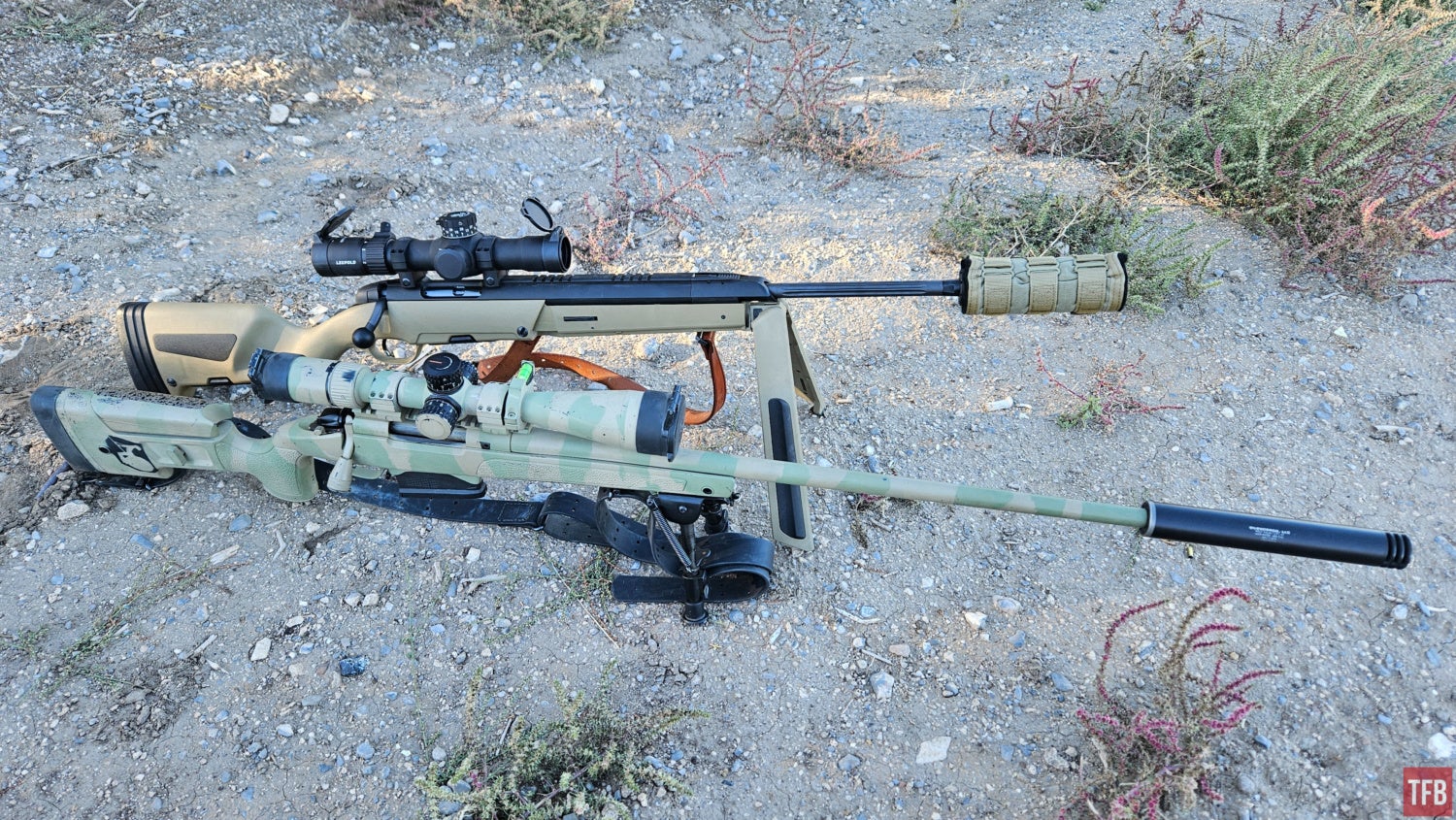
Sling
In Part 1 I said:
“Also in this vicinity is the sling mounting point for “Ching Sling” use. That style of sling uses three attachment points to create an easily accessible support loop. This loop is detachable, and I took it off for the review because that’s not a sling that I care for.”
Well wouldn’t you know it, I ended up with a Ching Sling not even a few weeks later. It was included in a lot of other gun parts, and I figured I should at least try it. I put the middle sling loop back on and attached the sling.
This style of sling is weird because it uses three attachment points. The middle strap slides out of the way for standard shoulder carry. But when it’s time to use the sling as a shooting support it creates a convenient loop. The support arm goes through the loop and with a half twist of the wrist the sling tenses up for support.
I set up an 8” steel plate at about 160 yards to practice realistic offhand hunting shots. In two runs I hit 2 out of 3 with the support of the Ching Sling. The shot that missed in each string was still close enough that it would have still been a lung hit on an elk.
That sling also provided good support from the kneeling position. Some unsuspecting rocks on the hillside at 350 and 450 yards fell pray to the Ching-sling-equipped Scout. The 6.5 Creedmoor is not a great choice for elk hunting at extended distances, but at reasonable ranges, this rifle and sling combo can put rounds on target.
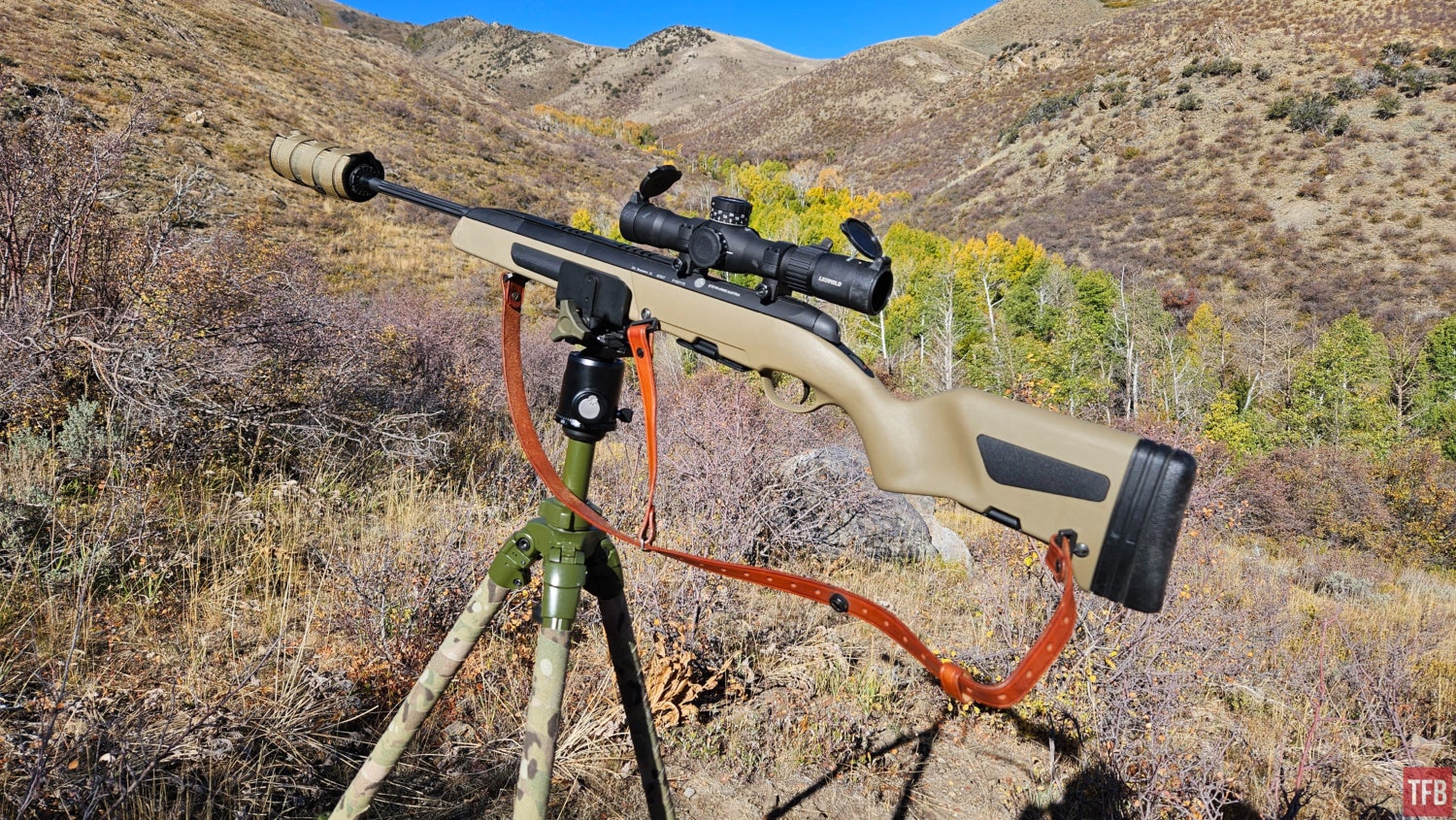
Optic Selection
Over the course of this multi-part review, I have used a range of various optics, but there is one that seems like a natural fit. That is the Leupold Mark 5HD 2-10×30. Leupold was kind enough to send one out for review and it seems like it was almost designed for the Scout.
It is an interesting scope because, like the Scout, it is meant to do most things well enough but is not a real specialist in any one thing. A 2X low end makes for a wide field of view that is usable with both eyes open, and the 10X top end is enough magnification to handle most things. In fact, a fixed 10x scope was used on the M40A1 sniper rifle.
The total weight of the rifle with the Magpul RLS sling, Leupold Mk5 2-10×30 and SilencerCo Harvester Evo attached is 10 pounds 0.8 ounces. Without the silencer or thread adapter, it weighs 9 pounds 0.6 ounces. That is a lot of capability at that weight. To compare to the M40A1 again, that rifle weighs about 14.5 pounds with the Unertl 10x scope mounted.
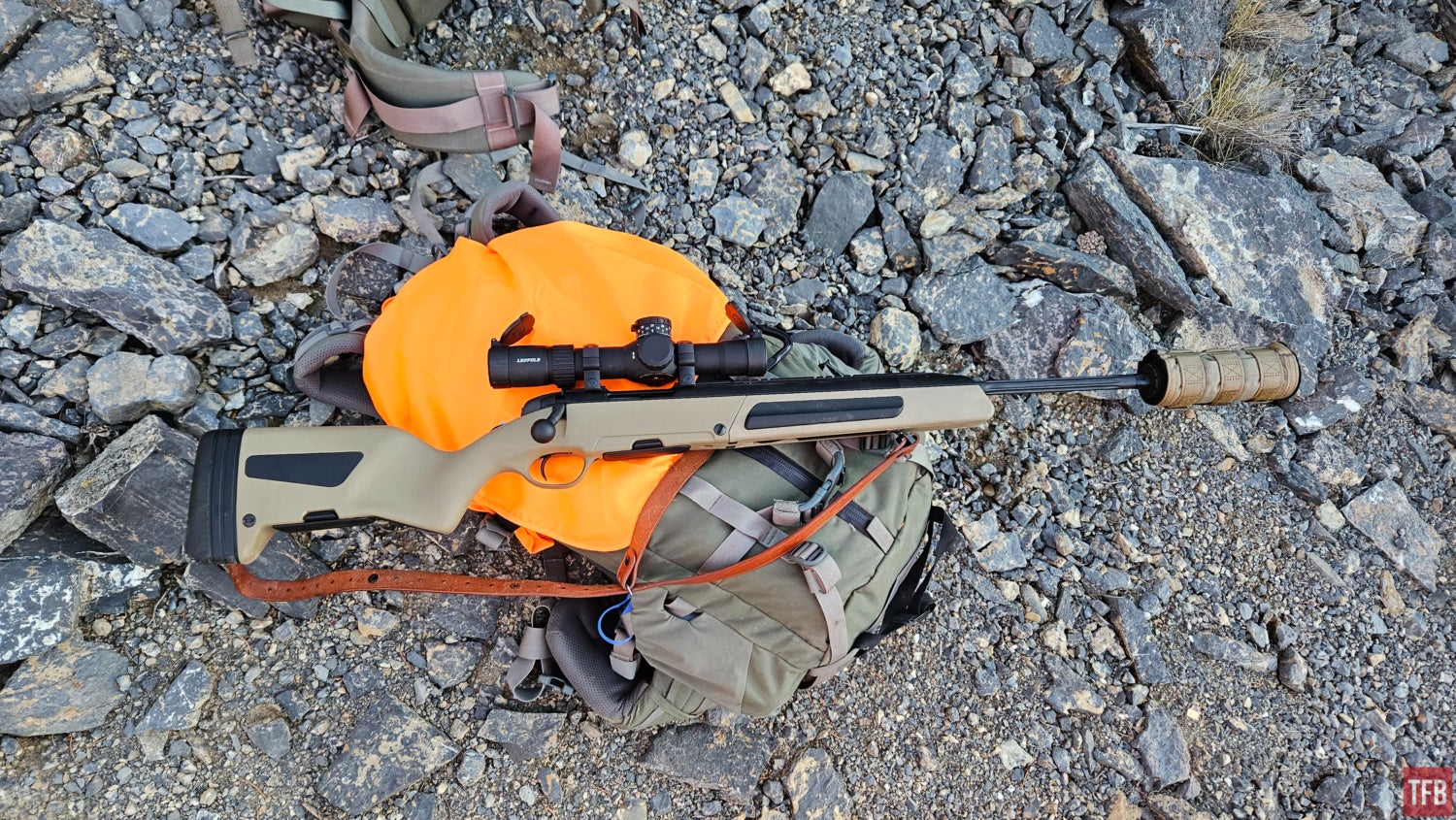
Iron Sights
I always feel better having a secondary sighting system on a rifle. For me, this is a hunting rifle, not a defensive tool, and the worst thing that could happen is a missed shot at an animal that probably was not trying to hurt me. But even that would be a major disappointment.
This brings me to the story of the first time I hunted with a scout rifle. Several years ago I came into ownership of a Ruger Gunsite Scout Rifle in .308 Winchester. After shooting it a lot I decided to bring it on my annual elk hunting trip. I’m a public land hunter who does not spend adequate (or, in many years, any) time scouting before the season. I consider myself lucky to even get to spend a few days out on the hunt, and with the under 10% success rate in most units, it is a rare and exciting thing to successfully get an elk.
The year in question I was hunting in the Uintas with my brother. We got started later than anticipated and ended up having to make camp in a small depression near the top of a ridge. The evening started out nice, but then the wind picked up. We moved down as far out of the wind as we could get, but it was cold. I did not have a thermometer but it was unpleasant to be outside even while dressed appropriately. We “slept” in bivy sacks that night, but I was unable to get much sleep. It was cold, windy, and lightly snowing. I was in a sleeping bag that I used for winter camping in Alaska and it was still uncomfortable.
When I awoke there was a layer of ice over my bivy. I started to gather my gear to get on the move for opening morning. But when I picked up my Ruger GSR, I found a nasty surprise: the scope base was loose. It rocked back and forth like it was not even attached.
There was no room in my bivy for the rifle so I had left it outside overnight, but it had been inside an Eberlestock backpack that offered some protection. It was not loose from an impact or rough handling. The gun had several hundred rounds on it and Leupold LER scope and Ruger factory base had been absolutely solid.
So what happened? As best as I can figure, the extreme temperature shift from a warm evening to a freezing cold night caused the aluminum scope base and the steel barrel to contract at different rates. This allowed the screws to loosen to a point where any hope of a zero was lost. I could have tried to use a Leatherman to tighten the screws and hope that I got them tight enough, but that was time I would not have to hunt on the most productive morning of the season. So I used the QD rings and popped off the scope and hunted with iron sights that day.
We did not shoot any elk that day, but I learned the value of backup sights in a very real way. No one thinks they will ever need them, but once you have experienced a situation where you did it makes you never want to be caught without them. That is a very long way of saying that I like having irons on the Steyr Scout. No matter what happens to the optic, you still have a decent chance of hitting something if you really need to.
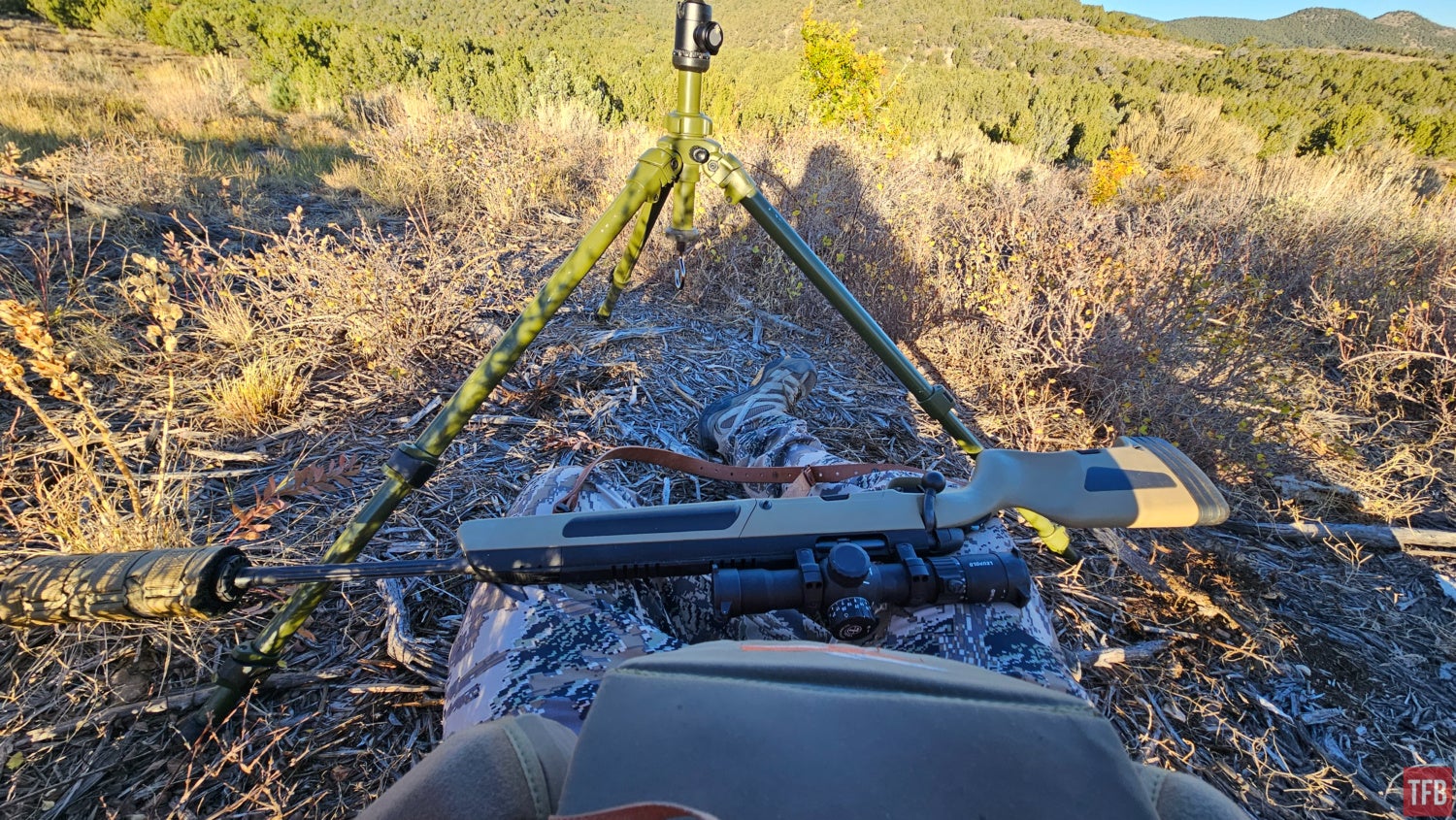
On The Hunt
Hunting with the Scout is enjoyable. It is short, light, and easy to live with. The 19-inch barrel with a ~6-inch silencer works out to an overall length similar to a standard hunting rifle. I really appreciated the maneuverability when the woods were thick, or when I was getting in and out of vehicles.
Other unique features make a lot of sense on a rifle meant for the field instead of the range. The three-position safety is easy to manipulate with gloves on, and the extra tab that pops up with the gun fully on safe is tactile in the dark. That position also locks the bolt handle closed so it doesn’t pop open in the brush. There is also always some risk of losing a detachable box magazine from a bolt action in the brush. How likely it is to lose a magazine varies from gun to gun, but the Scout has the benefit of a spare magazine in the stock if that happens.
The adequacy of 6.5 Creedmoor as an elk caliber is hotly debated. I generally hunt with a .300 Win Mag. However, the Creedmoor will get the job done at close range, and my brother carried my Win Mag so we still had a magnum around if the need were to arise.
As expected, it was not a problem on this hunt because we didn’t shoot anything (except some stumps and rocks when we got bored). But those shots were all on target. Whether from a tripod, the bipod, offhand, or from a sling-supported position, this is an easy gun to shoot in field conditions. The trigger is phenomenal and the bolt throw is smooth and fast.
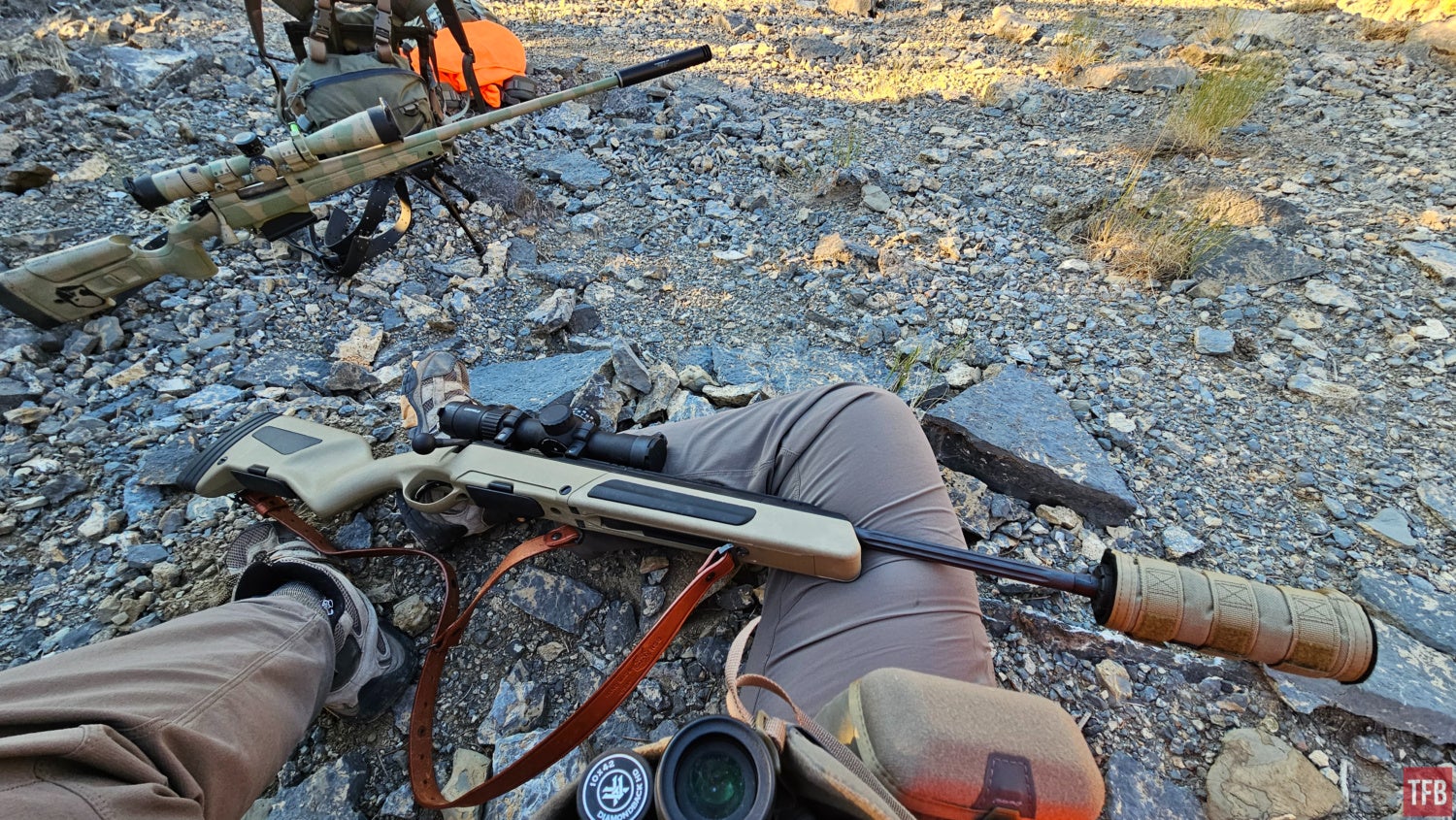
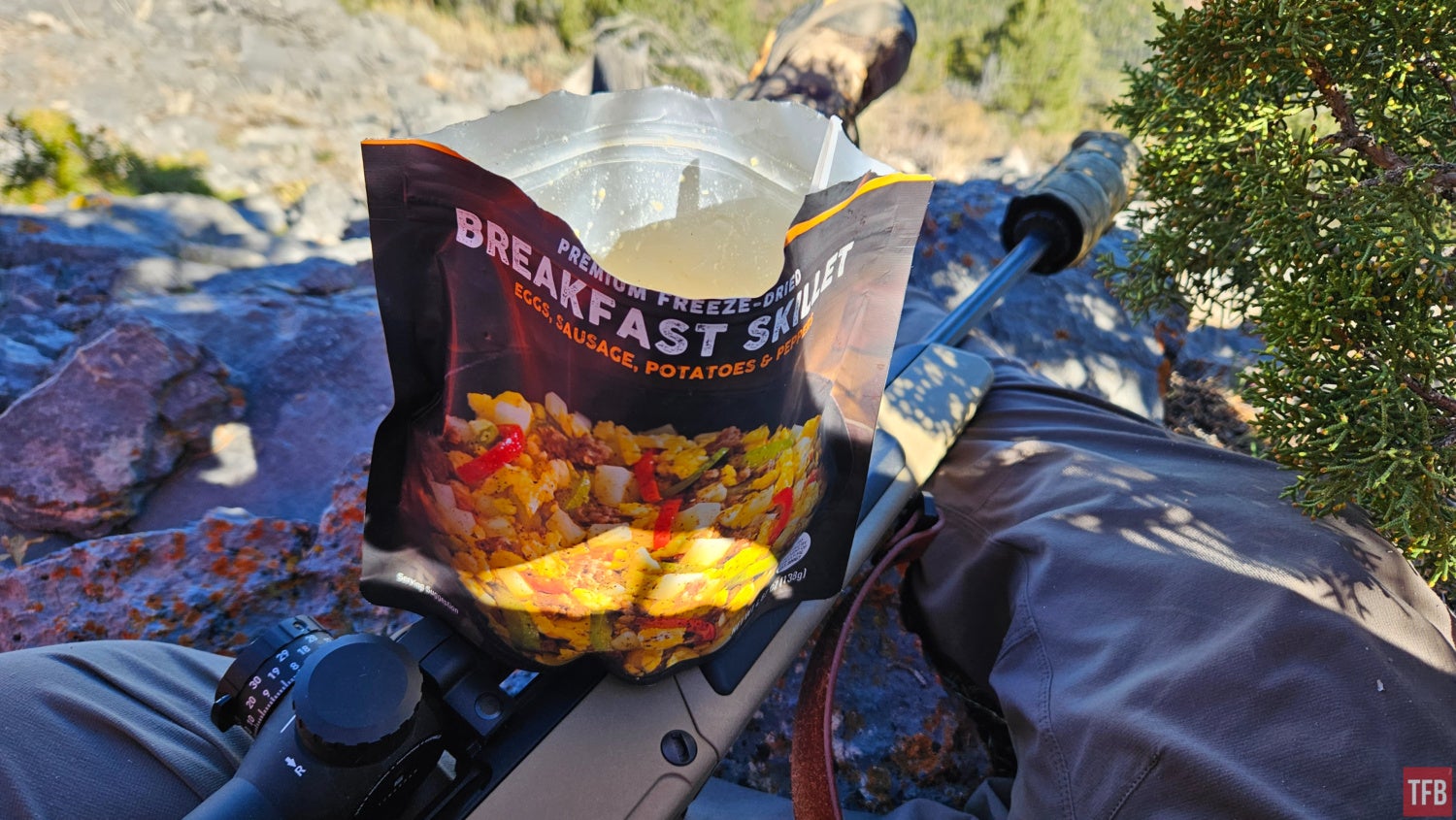
Conclusion
Unlike some rifles I have hunted with in the past, I liked the Scout more at the end of the hunt than at the beginning. The Steyr Scout shines as a hunting rifle. It is light, handy, and very easy to live with. There is no concern about scuffing a beautiful wood stock on a rocky slope. This is a rifle that is meant to be in the woods and in the hills. If a .308 Winchester or 6.5 Creedmoor is enough gun for the things you hunt, and you want to hunt with a rifle that is more interesting than the run-of-the-mill bolt action, the Scout is very compelling.
We are committed to finding, researching, and recommending the best products. We earn commissions from purchases you make using the retail links in our product reviews. Learn more about how this works.
 Your Privacy Choices
Your Privacy Choices
